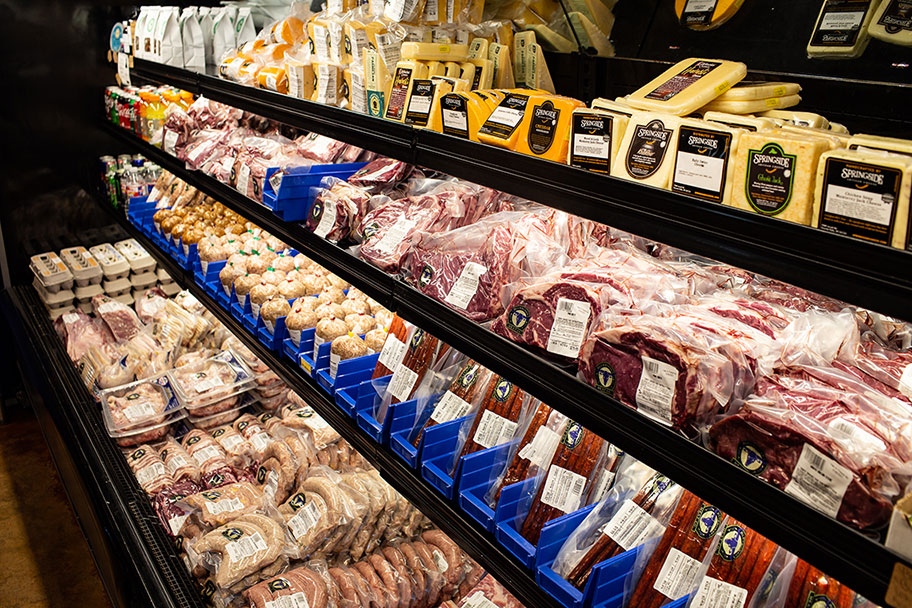Top Reasons to Patronize Bagley Farms Meat Market Edwardsville IL for Costs Meats
Uncover the Art of the Butcher's Cut in a Modern Meat Market
In the ever-evolving landscape of contemporary meat markets, the butcher's cut has transcended its conventional origins, combining olden workmanship with contemporary practices. Today's butchers are not simply cpus of meat; they are well-informed craftsmens who stress sustainability and honest sourcing. Their knowledge in choose and preparing cuts tailored to particular cooking needs uses an unmatched eating experience. What truly establishes the modern butcher apart is their capacity to forge a much deeper connection between consumers and the beginnings of their meat. Just how do these masters balance custom with advancement, and what effects does this have for the future of meat intake?
Development of Butchery Strategies
The advancement of butchery techniques mirrors an abundant tapestry of technology and adjustment driven by advancements in modern technology, adjustments in consumer demand, and a deeper understanding of meat science. Historically, butchery was a craft gave with generations, with methods sharpened over centuries to take full advantage of return and flavor. The commercial revolution ushered in mechanization, transforming typical techniques and enabling massive processing.
The mid-20th century saw butchery techniques further improved by clinical understandings right into muscle mass biology and meat aging, improving both tenderness and taste. Advancements like vacuum cleaner product packaging and refrigeration extended item shelf-life, permitting butchers to branch out offerings and improve quality assurance. This period likewise noted the surge of specific tools, such as band saws and meat slicers, which raised precision and efficiency in meat handling.

The 21st century has actually introduced electronic technology into the butchery realm. Digital systems now help in tracking animal provenance and enhancing cuts to fulfill details customer choices. Furthermore, a renewal in artisanal butchery has emerged, blending traditional skills with modern expertise to satisfy customers looking for ethical and lasting meat options. This evolution emphasizes a vibrant interaction between custom and technology, meeting contemporary demands while protecting the craft's heritage.
Comprehending Meat Cuts
Understanding the intricacies of meat cuts is crucial for both butchers and consumers looking for high quality and worth. For butchers, accurate cuts show ability and regard for the craft, ensuring very little waste and ideal return.

Comprehending muscular tissue structure is essential; muscles utilized much more often by the animal have a tendency to be tougher and are best fit for sluggish cooking important site techniques, while less-used muscles, like those discovered in the loin, are more tender and ideal for cooking or roasting. Experience with these differences equips customers to make educated options, enhancing their cooking ventures.
Picking High Quality Meat
Selecting the ideal meat entails even more than simply picking an aesthetically attractive piece from the display screen. The art of selecting top quality meat calls for a critical eye and understanding of certain features that represent quality and quality.
Second of all, consider the marbling, which refers to the white flecks of fat within the muscular tissue. Correct marbling is a vital indication of tenderness and flavor, as it thaws during cooking, improving the meat's juiciness. Bear in mind, higher marbling commonly associates with premium quality cuts, such as USDA Prime.
Appearance is another critical variable; meat ought to really feel solid to the touch, not slimed or extremely soft. Furthermore, bear in mind the scent. Fresh meat should have a tidy, neutral odor, without any kind of sour or off-putting smells.
Coupling Cuts With Cooking Techniques

Alternatively, tougher cuts like brisket and chuck roast are abundant in collagen, which damages down right into gelatin when prepared gradually. These cuts are excellent for braising or slow roasting, enabling the meat to soften in time and establish deep, intricate flavors. Cuts such as short ribs and pork shoulder fare well with slow-cooking techniques, where extended cooking times change their durable textures into succulent meals.
Lamb shanks and oxtail, which need read the full info here long term cooking to tenderize, are ideal prospects for cooking or slow simmering. These approaches coax out rich, hearty tastes while preserving dampness. By understanding the unique characteristics of each cut, cooks and home chefs alike can raise their cooking creations, making sure each recipe is both satisfying and remarkable.
The Butcher's Function Today
Browsing the advancing landscape of the contemporary meat market, the butcher's function today prolongs beyond plain preparation of cuts. Contemporary butchers are culinary artisans, instructors, and supporters for lasting techniques. They bridge the void in between the ranch and the fork by making sure moral sourcing, recognizing pet husbandry, and focusing on openness in the supply chain. This change reflects the growing customer demand for quality over amount, where provenance and pet welfare are extremely important.
In addition to crafting exact cuts, butchers now involve straight with consumers, offering cooking guidance and tailoring selections to fit specific demands and choices. Their experience in meat aging, marbling, and taste accounts encourages customers to make informed choices, enhancing their cooking experiences. This customized service exemplifies the butcher's developing function as a relied on consultant in the cooking area.
In addition, butchers are crucial in decreasing waste, making use of entire animals to produce diverse products such as sausages and stocks. This detailed strategy not only respects the animal however likewise lines up with modern sustainability objectives. By doing this, the modern butcher embodies both practice and technology, adapting to an ever-changing market while protecting the Get More Info virtuosity and honesty of their craft.
Verdict
The modern butcher's craft intricately weaves standard strategies with contemporary innovations, emphasizing lasting techniques and moral sourcing. Mastery in comprehending varied meat cuts and high quality signs empowers butchers to offer educated suggestions, aligning particular cuts with ideal cooking methods. This knowledge not only elevates cooking experiences yet also enhances the link between consumers and the beginnings of their food. By honoring historic techniques while embracing contemporary needs, the butcher's function remains important in today's advanced meat market (bagley farms meat market edwardsville il).